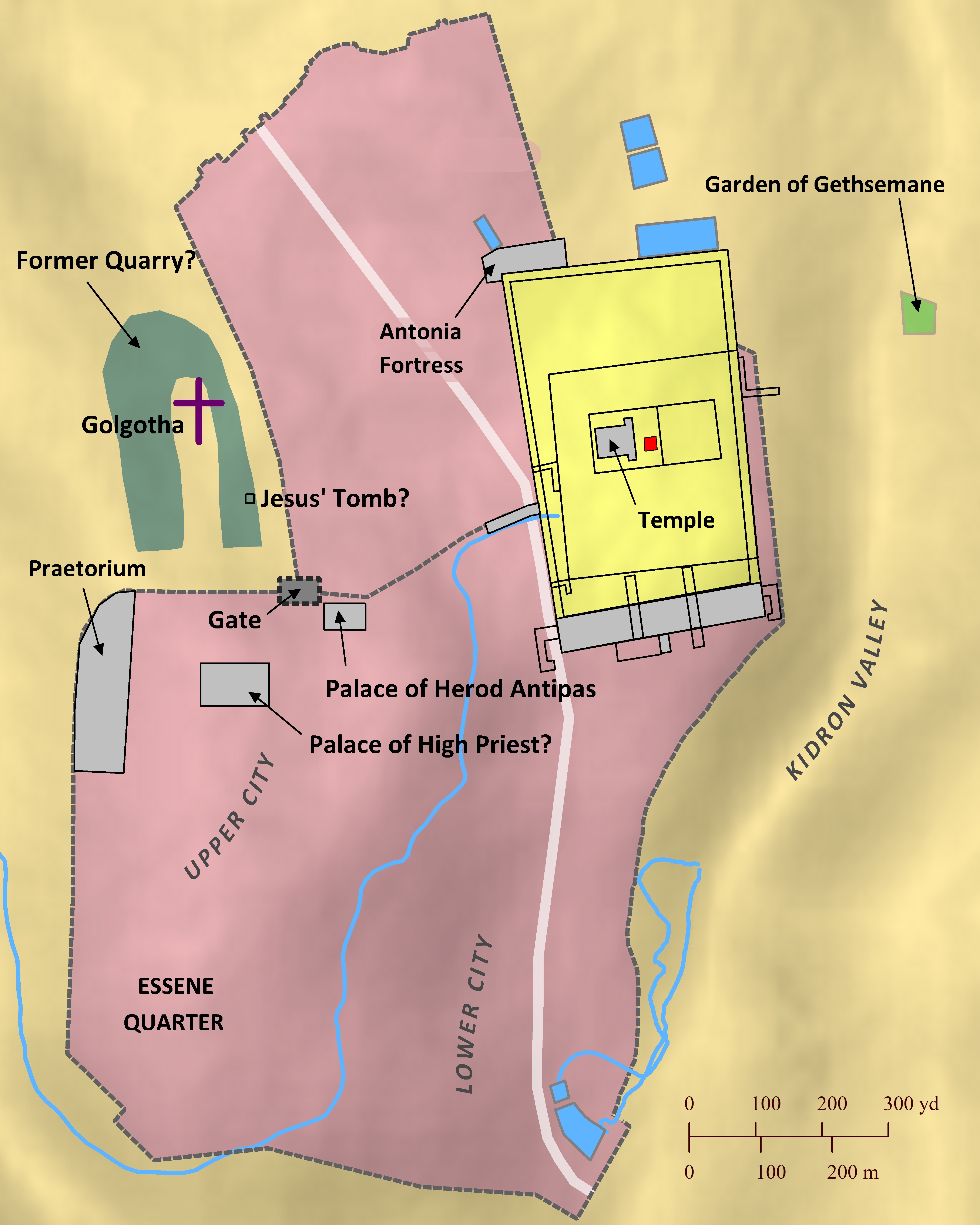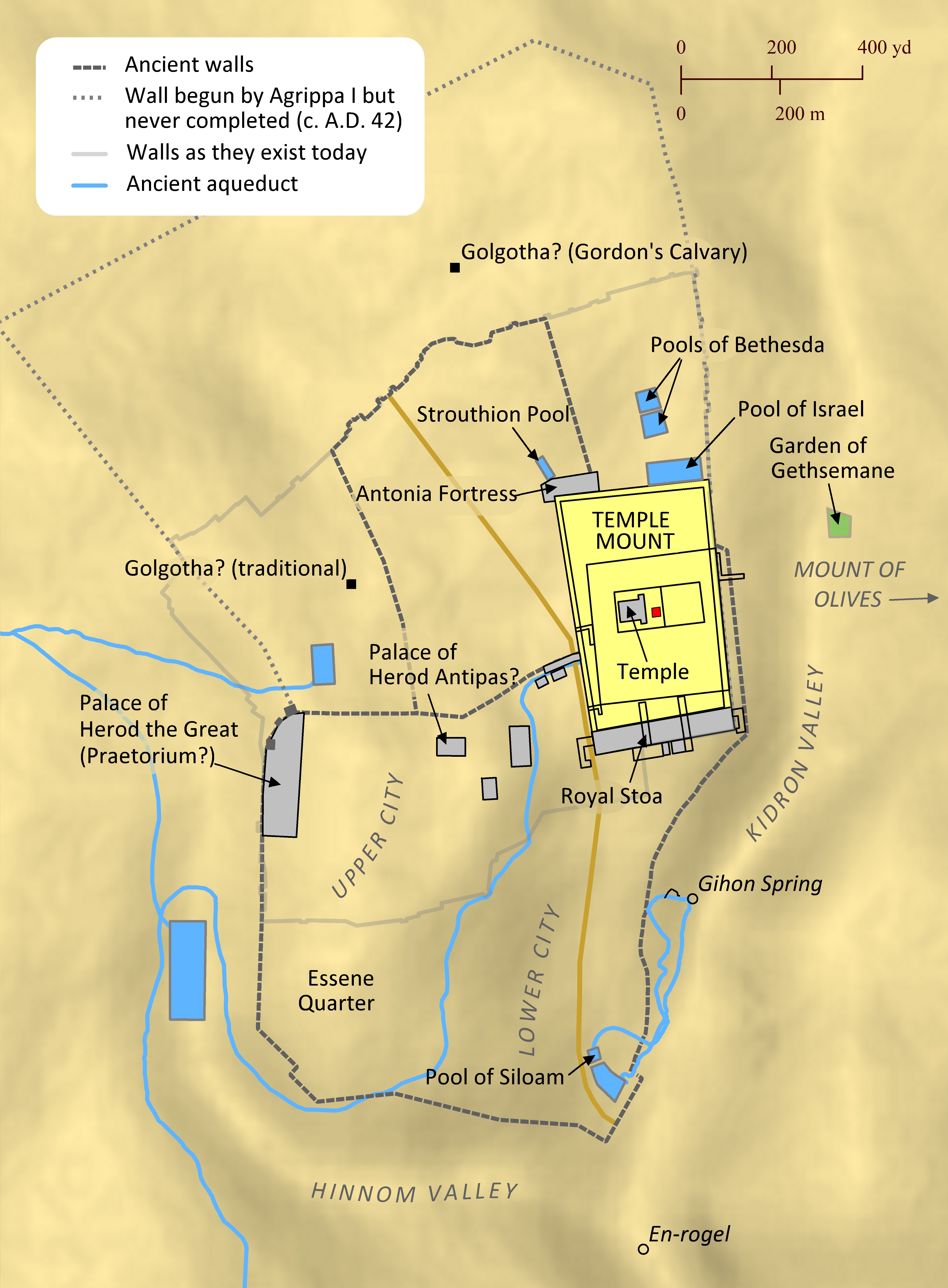Note: This view shows ‘verses’ which are not natural language units and hence sometimes only part of a sentence will be visible—click on any Bible version abbreviation down the left-hand side to see the verse in more of its context. Normally the OET discourages the reading of individual ‘verses’, but this view is only designed as a tool for doing comparisons of different translations—the older translations are further down the page (so you can read up from the bottom to trace the English translation history). The OET segments on this page are still very early looks into the unfinished texts of the Open English Translation of the Bible—please double-check these texts in advance before using in public.
AICNT So Judas, having taken the cohort and servants from the chief priests and [from the][fn] Pharisees, comes there with lanterns and torches and weapons.
OEB So Judas, who had obtained the soldiers of the Roman garrison, and some guards from the chief priests and the Pharisees, came there with lanterns, torches, and weapons.
WEBBE Judas then, having taken a detachment of soldiers and officers from the chief priests and the Pharisees, came there with lanterns, torches, and weapons.
WMBB Judah then, having taken a detachment of soldiers and officers from the chief priests and the Pharisees, came there with lanterns, torches, and weapons.
NET So Judas obtained a squad of soldiers and some officers of the chief priests and Pharisees. They came to the orchard with lanterns and torches and weapons.
LSV Judas, therefore, having taken the band and officers out of the chief priests and Pharisees, comes there with torches and lamps, and weapons;
FBV So Judas took with him a troop of soldiers together with guards from the chief priests and the Pharisees. They arrived there carrying torches, lanterns, and weapons.
TCNT So Judas took a cohort of soldiers and officers from the chief priests and Pharisees, and they went there with lanterns, torches, and weapons.
T4T So Judas came to that grove. He was leading a troop of Roman soldiers and some Temple guards who had been sent by the Pharisees and chief priests. They were carrying torches and lamps and weapons.
LEB So Judas, taking the cohort and officers from the chief priests and from the Pharisees, came there with lanterns and torches and weapons.
BBE So Judas, getting a band of armed men and police from the chief priests and Pharisees, went there with lights and with arms.
Moff So after procuring troops and some attendants belonging to the high priests and the Pharisees, Judas went there with lanterns and torches and weapons.
Wymth So Judas, followed by the battalion and by a detachment of the Temple police sent by the High Priests and Pharisees, came there with torches and lamps and weapons.
ASV Judas then, having received the band of soldiers, and officers from the chief priests and the Pharisees, cometh thither with lanterns and torches and weapons.
DRA Judas therefore having received a band of soldiers and servants from the chief priests and the Pharisees, cometh thither with lanterns and torches and weapons.
YLT Judas, therefore, having taken the band and officers out of the chief priests and Pharisees, doth come thither with torches and lamps, and weapons;
Drby Judas therefore, having got the band, and officers of the chief priests and Pharisees, comes there with lanterns and torches and weapons.
RV Judas then, having received the band of soldiers, and officers from the chief priests and the Pharisees, cometh thither with lanterns and torches and weapons.
(Yudas then, having received the band of soldiers, and officers from the chief priests and the Pharisees, cometh/comes thither/there with lanterns and torches and weapons. )
SLT Then Judas, having taken a band and attendants from the chief priests and Pharisees, comes there with lights and torches and weapons.
Wbstr Judas then, having received a band of men and officers from the chief priests and Pharisees, cometh thither with lanterns, and torches, and weapons.
KJB-1769 Judas then, having received a band of men and officers from the chief priests and Pharisees, cometh thither with lanterns and torches and weapons.
(Yudas then, having received a band of men and officers from the chief priests and Pharisees, cometh/comes thither/there with lanterns and torches and weapons. )
KJB-1611 Iudas then hauing receiued a band of men, and officers from the chiefe Priests and Pharisees, commeth thither with lanternes and torches, and weapons.
(Modernised spelling is same as from KJB-1769 above, apart from capitalisation and punctuation)
Bshps Iudas then, after he had receaued a bande of men, and officers of the hye priestes & pharisees, came thyther with lanternes, and torches, and weapons.
(Yudas then, after he had received a bande of men, and officers of the high priests and Pharisees, came thither/there with lanterns, and torches, and weapons.)
Gnva Iudas then, after hee had receiued a band of men and officers of the high Priests, and of the Pharises, came thither with lanternes and torches, and weapons.
(Yudas then, after he had received a band of men and officers of the high Priests, and of the Pharisees, came thither/there with lanterns and torches, and weapons. )
Cvdl Now whan Iudas had take vnto him the copany, & mynisters of the hye prestes and Pharises, he came thither with creshettes, wt lanternes, and with weapens.
(Now when Yudas had take unto him the copany, and ministers of the high priests and Pharisees, he came thither/there with creshettes, with lanterns, and with weapons.)
TNT Iudas then after he had receaved abonde of men and ministres of the hye Prestes and Pharises came thyther with lanterns and fyerbrondes and wepens.
(Yudas then after he had received abonde of men and ministres of the high Priests and Pharisees came thither/there with lanterns and fyerbrondes and wepens. )
Wycl Therfor whanne Judas hadde takun a cumpany of knyytis, and mynystris of the bischopis and of the Fariseis, he cam thidur with lanternys, and brondis, and armeris.
(Therefore when Yudas had taken a company of knights/warriors, and ministers of the bischopis and of the Pharisees, he came thither/there with lanternys, and brondis, and armeris.)
Luth Da nun Judas zu sich hatte genommen die Schar und der Hohenpriester und Pharisäer Diener, kommt er dahin mit Fackeln, Lampen und mit Waffen.
(So now Yudas to/for itself/yourself/themselves had taken the group and the/of_the high_priest and Pharisäer servant, comes he gone with torches, Lampen and with weapons.)
ClVg Judas ergo cum accepisset cohortem, et a pontificibus et pharisæis ministros, venit illuc cum laternis, et facibus, et armis.[fn]
(Yudas therefore when/with to_have_receivedt cohortem, and from pontificibus and Phariseess ministros, he_came there/to_that_place when/with laternis, and facibus, and armis. )
UGNT ὁ οὖν Ἰούδας λαβὼν τὴν σπεῖραν, καὶ ἐκ τῶν ἀρχιερέων καὶ ἐκ τῶν Φαρισαίων ὑπηρέτας, ἔρχεται ἐκεῖ μετὰ φανῶν, καὶ λαμπάδων, καὶ ὅπλων.
(ho oun Youdas labōn taʸn speiran, kai ek tōn arⱪiereōn kai ek tōn Farisaiōn hupaʸretas, erⱪetai ekei meta fanōn, kai lampadōn, kai hoplōn.)
SBL-GNT ὁ οὖν Ἰούδας λαβὼν τὴν σπεῖραν καὶ ἐκ τῶν ἀρχιερέων καὶ ⸂ἐκ τῶν⸃ Φαρισαίων ὑπηρέτας ἔρχεται ἐκεῖ μετὰ φανῶν καὶ λαμπάδων καὶ ὅπλων.
(ho oun Youdas labōn taʸn speiran kai ek tōn arⱪiereōn kai ⸂ek tōn⸃ Farisaiōn hupaʸretas erⱪetai ekei meta fanōn kai lampadōn kai hoplōn.)
RP-GNT Ὁ οὖν Ἰούδας, λαβὼν τὴν σπεῖραν, καὶ ἐκ τῶν ἀρχιερέων καὶ Φαρισαίων ὑπηρέτας, ἔρχεται ἐκεῖ μετὰ φανῶν καὶ λαμπάδων καὶ ὅπλων.
(Ho oun Youdas, labōn taʸn speiran, kai ek tōn arⱪiereōn kai Farisaiōn hupaʸretas, erⱪetai ekei meta fanōn kai lampadōn kai hoplōn.)
TC-GNT Ὁ οὖν Ἰούδας, λαβὼν τὴν σπεῖραν, καὶ ἐκ τῶν ἀρχιερέων καὶ [fn]Φαρισαίων ὑπηρέτας, ἔρχεται ἐκεῖ μετὰ φανῶν καὶ λαμπάδων καὶ ὅπλων.
(Ho oun Youdas, labōn taʸn speiran, kai ek tōn arⱪiereōn kai Farisaiōn hupaʸretas, erⱪetai ekei meta fanōn kai lampadōn kai hoplōn. )
Key for above GNTs: yellow:punctuation differs, red:words differ (from our SR-GNT base).

